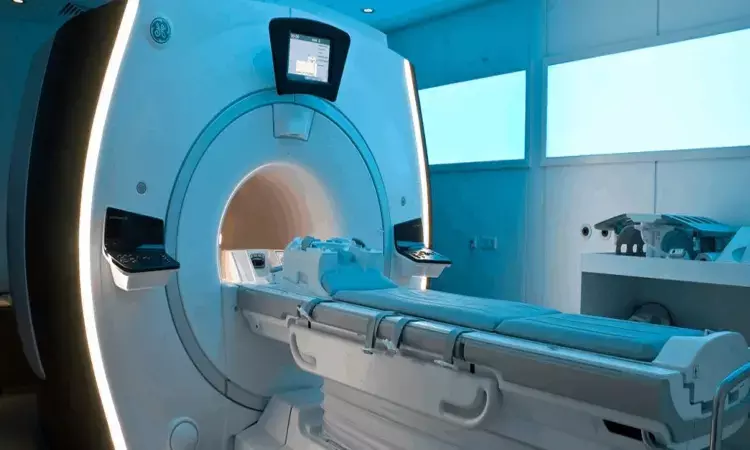- Home
- Medical news & Guidelines
- Anesthesiology
- Cardiology and CTVS
- Critical Care
- Dentistry
- Dermatology
- Diabetes and Endocrinology
- ENT
- Gastroenterology
- Medicine
- Nephrology
- Neurology
- Obstretics-Gynaecology
- Oncology
- Ophthalmology
- Orthopaedics
- Pediatrics-Neonatology
- Psychiatry
- Pulmonology
- Radiology
- Surgery
- Urology
- Laboratory Medicine
- Diet
- Nursing
- Paramedical
- Physiotherapy
- Health news
- Fact Check
- Bone Health Fact Check
- Brain Health Fact Check
- Cancer Related Fact Check
- Child Care Fact Check
- Dental and oral health fact check
- Diabetes and metabolic health fact check
- Diet and Nutrition Fact Check
- Eye and ENT Care Fact Check
- Fitness fact check
- Gut health fact check
- Heart health fact check
- Kidney health fact check
- Medical education fact check
- Men's health fact check
- Respiratory fact check
- Skin and hair care fact check
- Vaccine and Immunization fact check
- Women's health fact check
- AYUSH
- State News
- Andaman and Nicobar Islands
- Andhra Pradesh
- Arunachal Pradesh
- Assam
- Bihar
- Chandigarh
- Chattisgarh
- Dadra and Nagar Haveli
- Daman and Diu
- Delhi
- Goa
- Gujarat
- Haryana
- Himachal Pradesh
- Jammu & Kashmir
- Jharkhand
- Karnataka
- Kerala
- Ladakh
- Lakshadweep
- Madhya Pradesh
- Maharashtra
- Manipur
- Meghalaya
- Mizoram
- Nagaland
- Odisha
- Puducherry
- Punjab
- Rajasthan
- Sikkim
- Tamil Nadu
- Telangana
- Tripura
- Uttar Pradesh
- Uttrakhand
- West Bengal
- Medical Education
- Industry
Good or Bad: CT has decreased but pediatric advanced imaging has increased

USA: A recent study in the journal JAMA Pediatrics throws light on the trends in use of advanced imaging in pediatric emergency departments from 2009-2018. According to the study, the use of advanced imaging increased during this period. The use of computed tomography (CT) decreased but was accompanied by a greater increase in the use of MRI and ultrasonography.
To sum up, the overall use of advanced imaging has increased during the past decade. This is driven by the use of non-radiating modalities replacing the CT use.
There is an increasing awareness of the radiation risks from CT in pediatric patients. In emergency departments (EDs), evidence-based guidelines, improvements in imaging technology, and availability of nonradiating modalities have potentially reduced CT use.
Jennifer R. Marin, UPMC Children's Hospital of Pittsburgh, Pittsburgh, Pennsylvania, and colleagues conducted the study to evaluate changes over time and hospital variation in advanced imaging use.
This cross-sectional study assessed 26 082 062 ED visits by children younger than 18 years from the Pediatric Health Information System administrative database from January 1, 2009, through December 31, 2018. The primary outcome was the change in CT, ultrasonography, and magnetic resonance imaging (MRI) rates from January 1, 2009, to December 31, 2018.
Key findings of the study include:
- There were a total of 26 082 062 visits by 9 868 406 children (mean [SD] age, 5.59 [5.15] years; 13 842 567 [53.1%] male; 9 273 181 [35.6%] non-Hispanic white) to 32 US pediatric EDs during the 10-year study period, with 1 or more advanced imaging studies used in 1 919 283 encounters (7.4%).
- The proportion of ED encounters with any advanced imaging increased from 6.4% in 2009 to 8.7% in 2018.
- The proportion of ED encounters with CT decreased from 3.9% to 2.9%, with ultrasonography increased from 2.5% to 5.8%, and with MRI increased from 0.3% to 0.6%.
- The largest decreases in CT rates were for concussion (−23.0%), appendectomy (−14.9%), ventricular shunt procedures (−13.3%), and headaches (−12.4%).
- Factors associated with increased use of nonradiating imaging modalities included ultrasonography for abdominal pain (20.3%) and appendectomy (42.5%) and MRI for ventricular shunt procedures (17.9%).
- Across the study period, EDs varied widely in the use of ultrasonography for appendectomy (median, 57.5%; interquartile range [IQR], 40.4%-69.8%) and MRI (median, 15.8%; IQR, 8.3%-35.1%) and CT (median, 69.5%; IQR, 54.5%-76.4%) for ventricular shunt procedures.
"This study found that use of advanced imaging increased from 2009 to 2018. Although CT use decreased, this decrease was accompanied by a greater increase in the use of ultrasonography and MRI. There appears to be substantial variation in practice and a need to standardize imaging practices," concluded the authors.
The study, "Trends in Use of Advanced Imaging in Pediatric Emergency Departments, 2009-2018," is published in the journal JAMA Pediatrics.
DOI: 10.1001/jamapediatrics.2020.2209
Dr Kamal Kant Kohli-MBBS, DTCD- a chest specialist with more than 30 years of practice and a flair for writing clinical articles, Dr Kamal Kant Kohli joined Medical Dialogues as a Chief Editor of Medical News. Besides writing articles, as an editor, he proofreads and verifies all the medical content published on Medical Dialogues including those coming from journals, studies,medical conferences,guidelines etc. Email: drkohli@medicaldialogues.in. Contact no. 011-43720751


